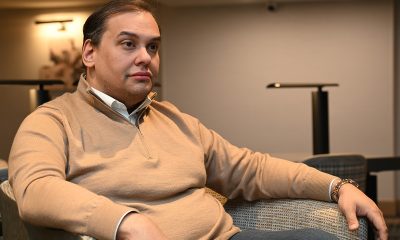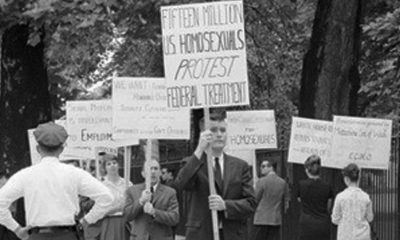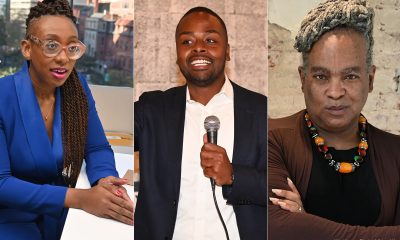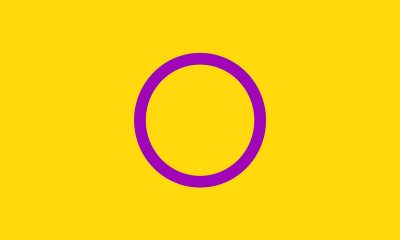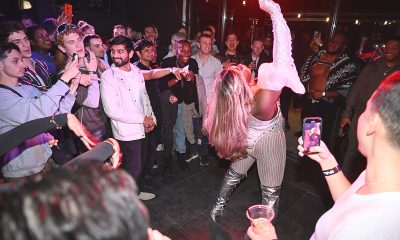a&e features
Letting it all hang out at Pride — did it help us in the long run?
We asked a veteran bike dyke, drag queen, leather daddy and go-go dancer to share their first-hand experiences
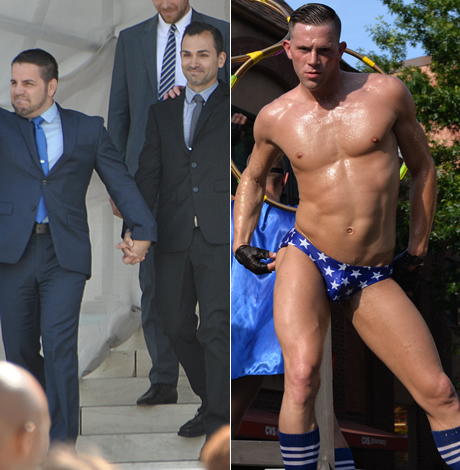
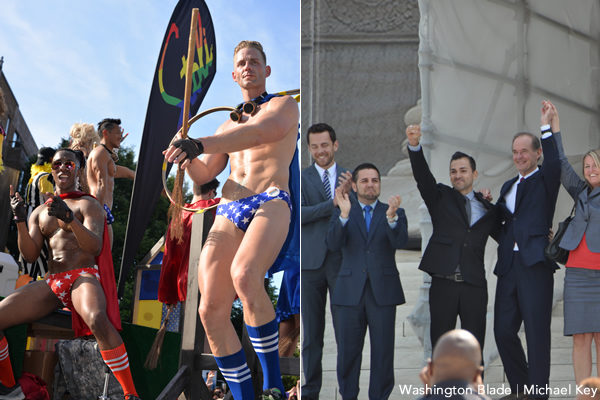
Capital Pride and all Pride events have always been — historically and to this day — a place to let one’s hair down and for LGBT folks to be unabashedly themselves.
Washington, widely seen as a more “buttoned-up” town than, say, New York or Los Angeles, was perhaps not as freewheeling as other cities, especially in the early years of Pride here when it was a one-day block party just off Dupont Circle beginning in 1975, but it’s grown hugely over the decades and for many years we’ve had all the revelers one would expect — scantily clad dancers gyrating around on parade floats, drag queens, leather daddies (sometimes in ass-less chaps), dykes on bikes (some topless) and more.
Conversely, the image the movement presented in the marriage wars and with LGBT people seeking elected office, was much different. Barney Frank and Tammy Baldwin dressed as conservatively as their counterparts on Capitol Hill, there was never anything outré about plaintiffs like Edith Windsor and Jim Obergefell and not-so-surprisingly, current “it” boy wonder, presidential hopeful Pete Buttigieg, is a young, heteronormative-type white gay guy who’s from the Midwest and goes to church.
The dichotomy has always existed as far back as the late Frank Kameny and the late Barbara Gittings demonstrating (pre-Stonewall) at the White House in skirts (for women) and suits (for men) while the gay masses — practically none out pre-’69 — tended to glom on more to the hippies than the Ozzie and Harriets. One of the organizers of the 1993 Gay March on Washington drew criticism from within LGBT circles for wearing leather to the White House to meet Bill Clinton.
But given the mainstream media’s penchant for televising more flamboyant factions in its Pride coverage and political enemies on the right painting Pride gatherings as dens of debauchery, what kind of tension existed between the two extremes? And now 50-some years down the road, did any of it matter? Might we have gotten further faster if we’d somehow reined in our Pride season excesses?
Many folks say either no, it’s a self-hating query or it’s irrelevant.
Or perhaps we needed both?
That’s what Cathy Renna, a long-time PR and media LGBT expert formerly of GLAAD, says.
“We need all of it. Why? Because we are all of it,” Renna says. “Our community is all of it and I think it’s disingenuous to even try to divide people over this. Why are we always trying to divide each other all the time? There are always gonna be folks out there going to Pride because they just want for that one day or one week out of the year, to let their hair down and celebrate, and when I say celebrate, I don’t mean just have a party and get drunk. I mean celebrate our community,
Renna, GLAAD’s national news media director from ’95-’02 and a volunteer for several years prior, says the issue has ramifications in how it plays out among LGBT people and outside that sphere.
As for the latter, Renna says historically it wasn’t so much about the media playing up “debauchery,” so much as it was looking for the most visual, arresting images.
“It was as much about their need to take a photo or shoot video of something different and interesting and highly visual than it was about homophobia or transphobia or wanting to find the more quote-unquote — and please include that because I don’t consider this to be true — but extreme parts of our community. Yes, drag queens and leather people are far more interesting than me and … what we fought for and I think eventually successfully achieved was a diversity of representation without diminishing, demeaning, minimizing or criticizing the parts of our community that are, to use the word of the day, flamboyant.”
Renna says drag queens and leather daddies at Pride deserve respect.
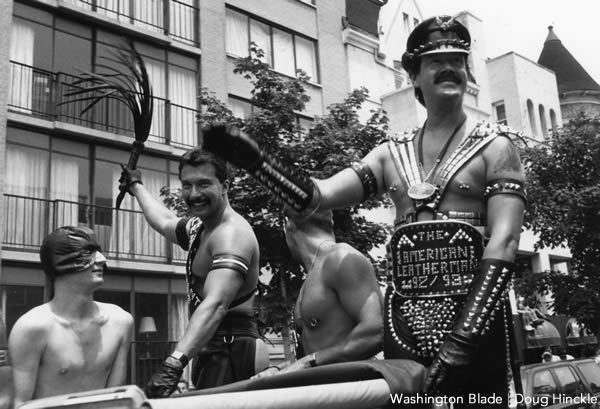
“They were the ones who were brave enough to be themselves and who were raising money for VD clinics before AIDS was even an issue,” she says. “People used to say, ‘But that doesn’t represent me.’ Well guess what — you don’t represent them. We’re a diverse community and this is really about two things — the media’s role and how the media works, which a lot of people don’t understand, and how we within our own community have our own isms — our own internalized homophobia, racism, sexism and transphobia and how it plays out.”
But look at the plaintiffs in the marriage cases and various successful LGBT elected officials, the images they project and it’s not a huge leap to imagine there was some vetting and grooming going on behind the scenes. Sure, those arenas are much different than a Pride event, but even so, one imagines movement gatekeepers would have only been doing their due diligence in monitoring plaintiff or candidate deportment at critical times.
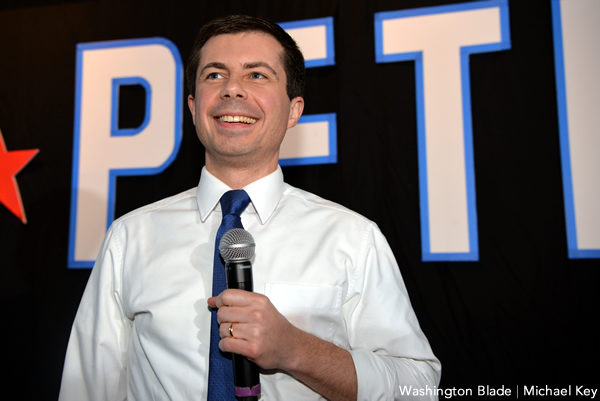
Chuck Wolfe, former president/CEO of the Victory Fund from 2003-2015, says not really.
“I never participated in any conversation like that,” he says. “We had kind of an operating opinion at Victory when I was there that all is fair and it takes every part of our community moving the ball forward and one of the reasons we were successful as fast as we were is because there was no one controlling entity saying, ‘You have to do this,’ or, ‘You can’t do this,’ or, ‘You can’t do that.’ Everybody was doing their part whether it was at a Pride event, testifying on Capitol Hill — all of it mattered, every bit of it.”
Patrick Wojahn, out mayor of College Park, Md., who with his partner Dave Kolesar was one of the couples in the 2006 ACLU/Equality Maryland state marriage case, says it was made clear to him and other plaintiffs to be mindful of their status as representatives.
“One thing we were cognizant of and they made sure we understood was that we were representing the entire LGBT community and we were kind of the face of that,” Wojahn says. “We weren’t supposed to stand in for every single LGBT person out there, but when people saw us, it was understood that how LGBT act, for better or worse, and the political success or failure of what we were doing had a lot to do with how people perceived the LGBT community. It’s true in politics as well. It’s great to have places like Pride where people can act like freaks and do whatever comes upon them to do, but that’s a very different world than say politics where you have to come across as relatable to the people you’re trying to advocate for. It’s best in political situations if you don’t have to overcome that barrier of relatability. If you’re trying to sell people on the idea that we’re entitled to respect, it’s first helpful if they can relate to you on a personal level.”
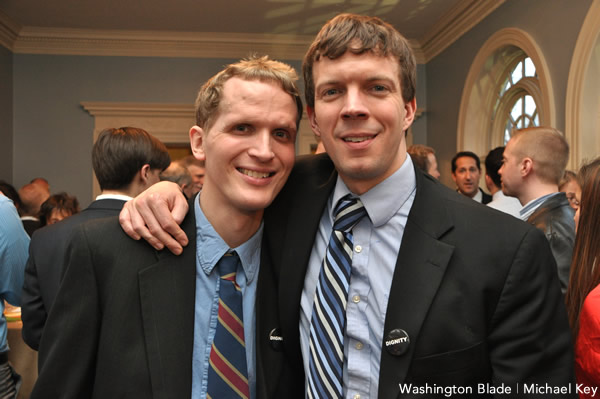
Wojahn says he doubts there was ever much hand-wringing behind the scenes about Pride behavior, but says it’s become less and less of an issue over the years if it ever was one.
“Maybe this is just my skewed perspective of living in the D.C. metro area, but I think there’s been a growing recognition that not all gay people who live next to you are necessarily like the ones out dancing on the floats,” he says. “We’re just as diverse as straight and cisgender people. We have a lot of different things we’re interested in and do a lot of different things. Not all straight people do crazy things. … It’s important to have all different types of people out there being visible.”
Not everyone sees it that way, however. Lloyd Shipley, a longtime 17th Street, N.W. resident, is 70, speaks with a deliciously gravelly voice and prides himself on being a sort of D.C. gay resident curmudgeon type. He’s been attending Capital Pride for 21 years since coming out of straight life (he was married twice to women) and says both Pride and LGBT people in general have gone increasingly downhill over the years.
“This is just my opinion — I believe in opinions and we can have different ones — but I’m so tired of everything being so sexualized in the gay community,” Shipley says. “I feel like Pride has forgotten what Pride is about. You ask nine out of 10 people on Sunday what the theme is this year, they won’t know. But ask them what the best party was, they’ll all know that. I remember my first Pride, I was in Dupont Circle by myself because I didn’t know anybody and I saw float after float and I just cried because they were so meaningful. We should be proud of our accomplishments. Can we knock off the sex shit? Make the floats something to remember. Honor Frank Kameny. Honor Stonewall — not a bunch of guys walking around with their asses hanging out with squirt guns.”
Shipley says it’s not just a Pride problem, but overarching issues he considers rampant among D.C. gays just end up getting writ large there because of the size of the gathering. He says friends in his age bracket are equally fed up.
“I know a lot of older people who say, ‘You know what? I’m done with it. We haven’t been in 15 years.’”
He used to open his home to friends to watch the parade but got tired of ending up with a houseful of 50 people half of whom he says he didn’t know. It took the cake the year he says he found two guys he didn’t know having sex in his bed. This year he’s just inviting a few friends over. They may or may not watch the parade.
“It’s so disorganized,” he says. “It goes on and on, there are huge gaps in the flow, you’ll see float after float after float and none of them reflect the theme whatsoever. It’s gotta mean something. It can’t just be a bunch of half-naked guys throwing beads and squirting people. … I’m gonna write a book someday called ‘Thine Own Worst Enemy.’ We moan and groan about how things are but how much of it is our own damn fault?”
Renna says sensationalizing or using Pride footage as a scare tactic for Middle America may have worked in the short term here and there, but ultimately wasn’t successful.
“I think it did us a favor in that it pushed our visibility,” Renna says. “We pushed through it and it taught us that we need to be better at showing the full diversity of our community. It’s not about don’t show drag queens and leather people, it’s about don’t just show drag queens and leather people.”
Renna says the issue came up constantly in her years of media training. LGBT activists, especially, she says, in smaller markets, lamented the attention the drag queens and go-go boys would get.
“It’s because they’re interesting,” she says. “Be creative, do something interesting. I used to tell GLSEN chapters, rent a school bus, fill it with people, get creative, dress as crossing guards, be fun, be visible. People walking down the street in khakis and T-shirts? Not interesting!”
Wojahn says the whole thing can be touchy.
“If you’re trying to sell people on the idea that we’re entitled to respect, it’s first helpful to relate to them on a personal level,” he says. “You may be taking on a bit more than you can chew when you say, ‘I want you to accept that I’m LGBT, am in a committed relationship and want legal representation with this person, but I also want you to deal with the fact that I’m standing here topless with piercings.”
We asked some early Capital Pride participants for their thoughts.
Ella Fitzgerald, drag queen

Being a drag queen decade after decade ain’t easy. Just ask Ella Fitzgerald (aka Donnell Robinson), arguably Washington’s most veteran and highly regarded queen.
She remembers her first Capital Pride in 1986 and says it was a much different experience than it is today. Riding with a contingent of Academy of Washington queens in a convertible through Adams Morgan, she remembers being harassed.
“There were straight Latinos giving us the sign language of death signs,” she says. “They harassed the girls on the bikes with their tits out and all that. We’ve definitely come a long way since ’86. It’s much more accepted now. People understand the whole drag thing, the leather community. It’s very diverse now and I remember back in the ‘80s, even in our own community, there was so much discrimination between the drag, the leather and the lesbians. Yes, we still have a long way to go, but we have become much more accommodating of each other’s differences.”
Fitzgerald, 64 and a hairdresser by day, says she was never concerned about being filmed in an early Pride parade or festival. She says she was the first drag queen featured in Washingtonian magazine in 1984 and was happy for the coverage.
She says things have, in her opinion, gotten a bit unnecessarily wild at times over the years.
“The gays who are more flamboyant and make it very obvious, I feel at times that has put a damper on everything we’re trying to achieve,” Fitzgerald says. “How do I say this? There are gays out there on a different level. More class, more sophistication and the younger kids, they’re like wild kids that have been let of a cage and they just act like, ‘I’m gonna do and say whatever I feel at the moment,’ going around in shorts and a T-shirt, ‘cause I want to be seen and I don’t care, this is me and if I want to marry a woman or a man — it’s a lot.”
On the other hand, she doesn’t believe in reining anything in just to be more palatable to straight people.
“Of course not,” she says. “We absolutely need all aspects of the rainbow. I grew up in the ‘70s and it’s amazing to see how far we’ve come in 40-some years. It makes me wonder what the future’s gonna be.”
JOEY DiGUGLIELMO
Margaret McCarthy, Outriders

Margaret McCarthy’s Capital Pride experience has evolved over the years.
She came out in the mid-‘80s and has been going to Capital Pride since about ’86 or ’87. She was a member of Open Door Metropolitan Community Church, a sister parish of sorts to MCC-D.C., and participated for years with other parishioners in the Pride parade.
She got into motorcycles around 2009 through a former girlfriend and started riding in Pride with Dykes on Bikes around 2013. A break-off group called Outriders kind of took over a year or so later and eventually McCarthy joined their contingent. They usually have between 40-60 riders each year. Most are members but some join them just for the day.
She agrees with Cathy Renna that a diversity of representation is needed at Pride and in the world in general.
“There are all kinds of people that are part of the gay community — the fairies, the drag queens and all that and that’s part of my community,” says the 54-year-old Montgomery County Police service aide for the 6th District Station in Gaithersburg. “I don’t have to necessarily get it or understand it. I love them and they are part of my community.”
McCarthy says sometimes PDAs get a bit much but it’s not really an LGBT thing.
“I’ve done it. I’ve been walking at Pride and grabbed my girlfriend for a kiss or whatever,” she says. “If you see a couple making out on the Metro or Pride or wherever, I don’t care if they’re gay or straight, I don’t think that’s appropriate. But at a Pride festival, absolutely, it’s about letting go. It’s the one day you can really let your hair down and be totally who you are.”
As for Pride images getting manipulated by political enemies, McCarthy agrees it happens but says LGBT revelers shouldn’t let it dampen their spirits.
“They make it look like it’s all about depravity and sex and stuff and yeah, it makes me mad because that’s not who we are and unfortunately, there are people who may not know gay people and think that’s the whole spectrum. They see that and say, ‘Well look at those faggots and dykes, they’re scum,’ so yeah, it makes me mad. But it’s just one part of our community, it’s not the whole community.”
How has it changed?
McCarthy says she remembers getting harassed at early D.C. Pride events.
“They would see we were with a church and they’d say, ‘How can you be Christian and gay, you’re totally violating the Bible.’ I don’t know if it was Westboro Baptist or who it was, but yeah, there was some of that in the early years.”
McCarthy had protections in writing at her job so she was never worried about being recognized at Pride. She was fully out by her mid-20s.
She says a few Outriders go topless or cover just their nipples.
“I just kind of shake my head and go, ‘Whatever.’ It doesn’t offend me. I don’t really get it — they must get horrible sunburn, but yeah, not many of us do it.”
JOEY DiGUGLIELMO
Kenneth, go-go dancer
Our scantily clad dancer of yore, Kenneth, declined to give his last name. He danced nude at Secrets starting at age 18 from 1996-1999 but is in business now and says he prefers his clients today not know of his past work.
He participated in several Pride parades on the Ziegfeld’s/Secrets float with Ella. The dancers would typically wear matching short shorts and Secrets tank tops.
“I don’t know what the rules are now, I think it’s relaxed a little, but we weren’t ever in thongs or bikinis or things like that,” he says. “We kept it a little more covered back then.”
He was fully out at the time and not fearful of being seen. He says most of the dancers then who were gay were out and not fearful of being seen. A few dancers were straight, he says, but “didn’t seem concerned about” being in a Pride parade.
Now 40, he remembers those years fondly.
“It was a very interesting thing to do when I was 19 or 20. I got to sew my wild oats and it was good experience overall. I learned a lot.”
Kenneth says it’s probably a non-issue today but he suspects more scandalous Pride behavior probably did work against LGBT rights in years past.
“There was a lack of exposure then so if all you saw through the ‘70s to the ‘90s was how they televised it, then you only knew part of the story. I think once there was more exposure, people understood that was only one aspect of the community.”
He says Pride was a much different experience for everyone 20-30 years ago.
“For a lot of people, that was the only time they could be gay,” he says. “They weren’t able to dress and behave the way they wanted to the other 364 days of the year, it was back to their normal attire and behavior, so I would say it’s died down some because we can be ourselves more year round now. If you could only do that during Pride, people tended to go more over the top.”
JOEY DiGUGLIELMO
John Watson, leather enthusiast
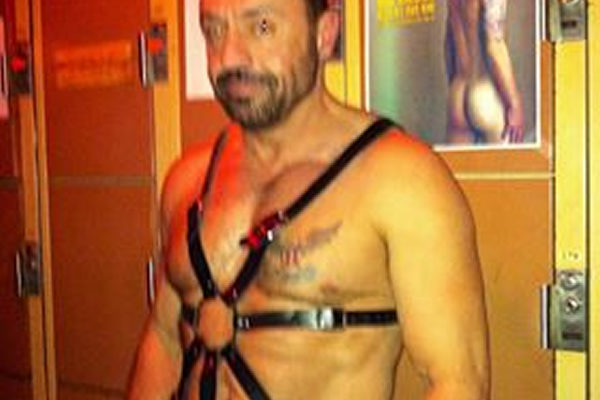
Gay leather enthusiast John Watson says he first got into the D.C. leather scene at age 16 when he and two male friends his age, who lived in Arlington, began going to the D.C. Eagle, the city’s only leather bar, around 1974.
It was a time when the city’s bars and nightclubs, both gay and straight, didn’t consistently require ID checks for young-looking customers, Watson says.
About one year later, in June 1975, shortly after he turned 17, Watson and his two gay friends attended D.C.’s first Gay Pride event, which consisted of a block party on 20th Street, N.W., near Dupont Circle.
Although the three were getting more and more into the leather scene and drove into D.C. nearly every weekend to go to the Eagle, neither of them wore leather at that first Pride block party, Watson says.
“We had on shorts and tank tops, which of course we took off and were shirtless,” he says. “But with the leather scene back then, people didn’t want to appear out in public in it. And thinking back, I don’t remember seeing anybody that first time in leather. There may have been, but I don’t remember seeing anybody in leather.”
It wasn’t until around 1980, Watson thinks, when the D.C. Pride festival had moved from 20th Street to the grounds of Francis School next to P Street Beach Park, that leather enthusiasts began attending Pride wearing leather clothes and gear.
“As it progressed more and more you saw more leather,” he says. “It was when people got to the point where they really weren’t scared, more or less around 1980. People got tired of being in the closet.”
Watson recalls that in the earlier years he and his friends, along with many others in the leather scene, were fearful of the possible repercussions of being publicly identified as leather guys. Being so identified would automatically out you as being gay, he says, as well as out you — even among gays — as being weird or odd.
“It was what you would call an underground community,” he says. “A lot of people felt it was not only strange but perverted, to be honest. If you were into that, you kept your mouth shut most of the time because you didn’t want anyone to know. Even the regular gay people were, ‘Oh, wow, that’s perverted.’ It wasn’t until the 1990s that I began to wear leather in public. Before that I would take it with me and put it on inside the clubs.”
Thankfully, Watson said, attitudes began to change as the LGBT rights movement became more visible and assertive in the 1980s and 1990s. He recalls seeing far more leather folks at D.C. Pride events in those years, possibly even more than what is seen in more recent years as the Pride events have become more “corporatized.”
Watson, who works in insurance, says he managed to keep his interest in leather separate from his work other than times he has worked at the Eagle. Among his most interesting “day work” jobs, he said was a stint from 1983-1988 as an assistant clerk at the U.S. Supreme Court.
Among other things, he gave private tours at the court to gay rights pioneer Frank Kameny and then-Washington Blade News Editor Lisa Keen.
LOU CHIBBARO, Jr.
a&e features
Local, last-minute holiday gift ideas
Celebrate the season while supporting area businesses

The DowntownDC Holiday Market is bustling. Union Station is decked out with its annual Christmas tree. Washingtonians have wrapped their houses and apartment balconies with festive lights and holiday decorations. The holiday season is here. And with stockings to fill and empty space under the tree, Washington’s local shops and artists have plenty to offer.
Show your LGBTQ and D.C. pride with the Washington Blade’s annual holiday gift guide.
To embrace the holiday buzz: The Blanco Nwèl cocktail from Alchy Cocktails. This Caribbean eggnog is one of Alchy Cocktail’s seasonal holiday cocktails. The flavor profile is similar to coquito, a traditional Puerto Rican Christmas drink with a coconut base. As a queer and Caribbean-owned business, Alchy Cocktails has been based out of Washington since 2021. Blanco Nwèl is available in both cocktail ($24) and mocktail ($12) online and at a variety of holiday markets, including the Tingey Plaza Holiday Market, the Flea Market at Eastern Market, Union Station’s Main Hall Holiday Market, and more. ($24)
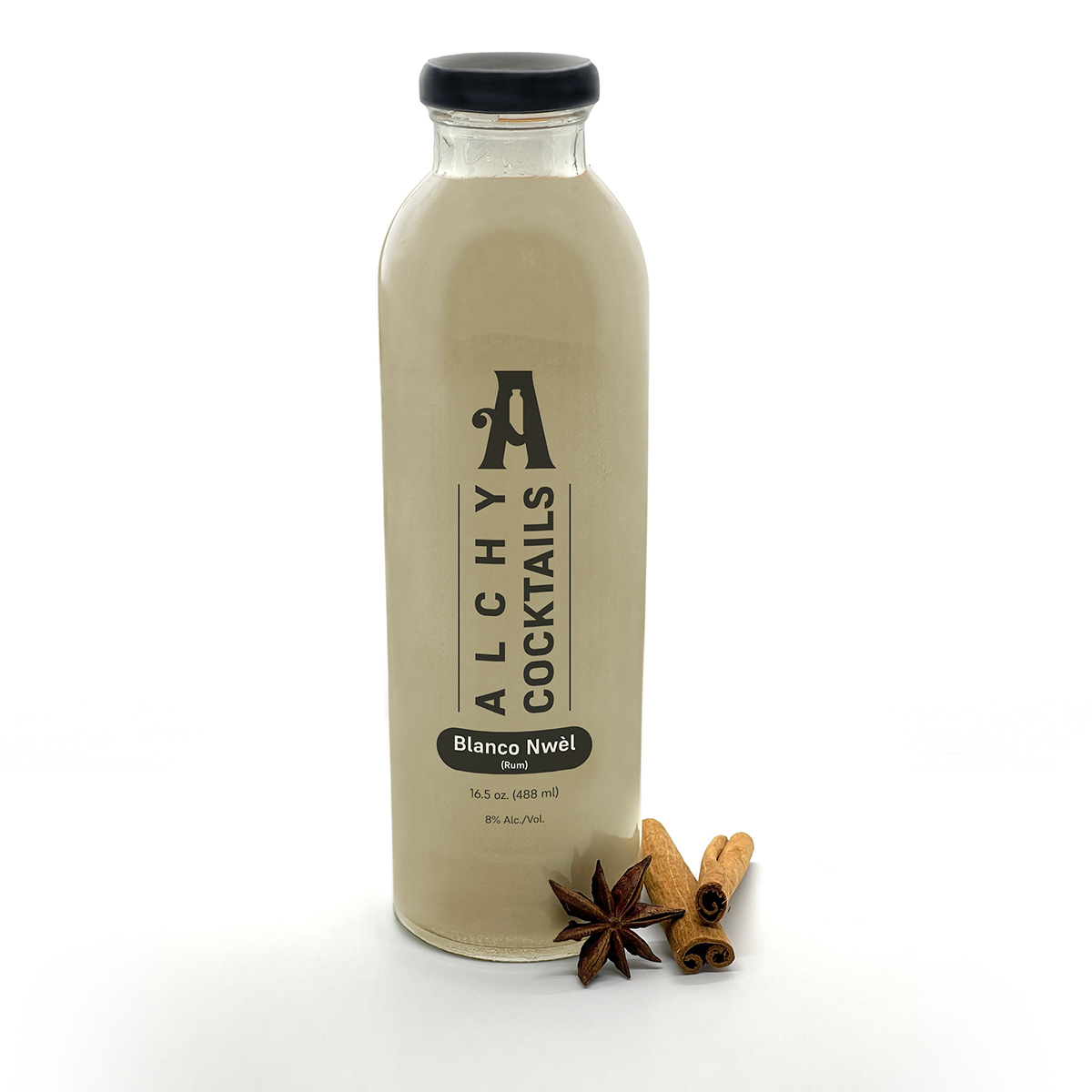
A spicy bite: Gordy’s Cajun Okra from Salt and Sundry. These spicy, tangy pickles pull on Southern Cajun-style flavors, packing a punch with paprika, cayenne, and more. Gordy’s is an LGBTQ-owned and Washington-based brand, making this gift an opportunity to support a local LGBTQ business straight from the jar. This pantry staple is available on Salt & Sundry’s website and at its locations in Union Market, Logan Circle, and its Georgetown holiday pop-up store. ($14)
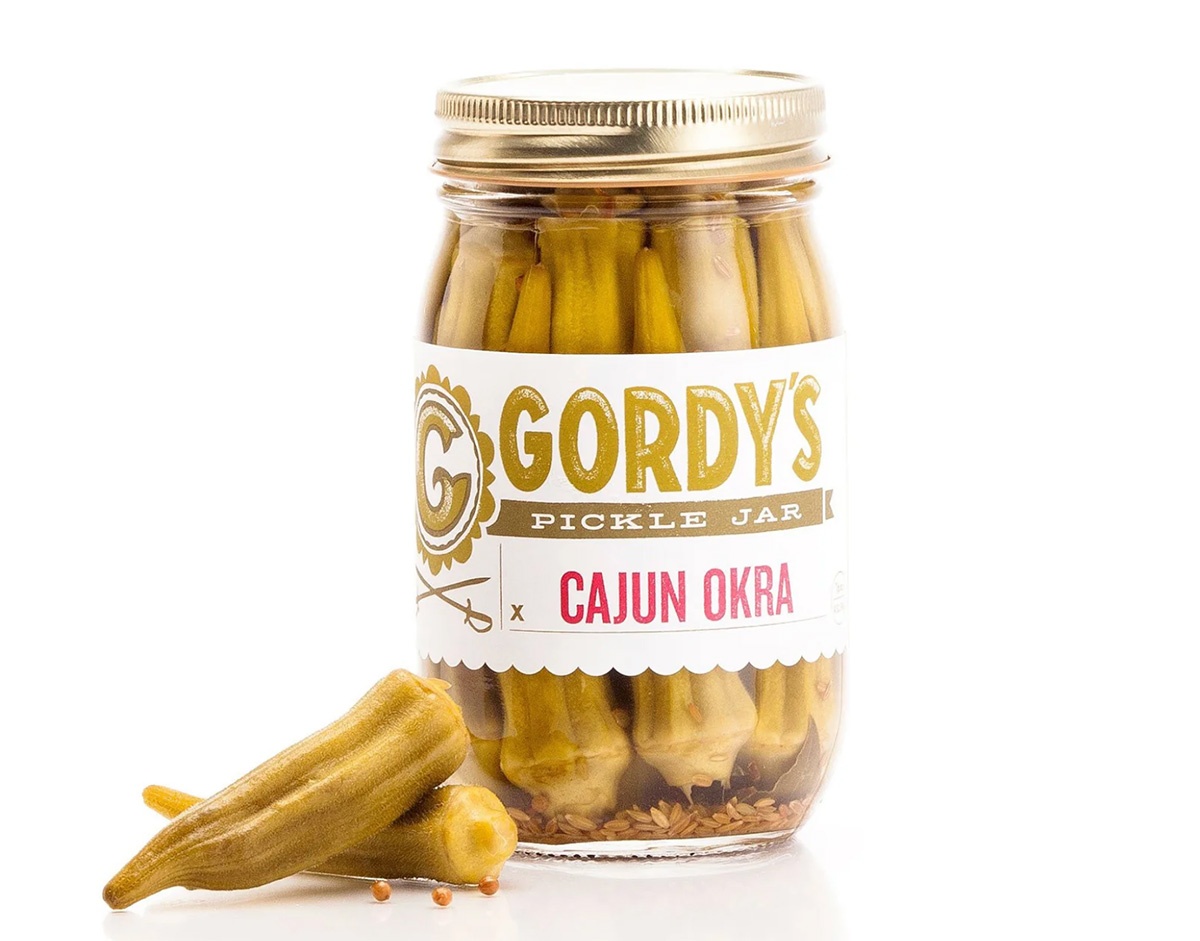

To celebrate Washington pride: The DC Landmark Tote Bag from The Neighborgoods. Native Washingtonians, visitors, friends and family alike will find something to love about this Washington-themed tote bag. Food trucks, the 9:30 Club, the Metro logo and pandas from the National Zoo are just some of the city’s landmarks depicted across the tote in a red, white, and blue color palette. The tote is a part of the DC Landmarks collection, which donates 10 percent of its sales to the American Civil Liberties Union. The Neighborgoods itself is a local, woman-owned business built out of a passion for screen-printing in 2013. The 100 percent cotton canvas tote is for sale online or at the DowntownDC Holiday Market. ($22)
To give friends and family their flowers: The Flowers Bandana from All Very Goods. This 100 percent cotton bandana was designed in Washington and hand printed in India. Its uniqueness comes in being covered with the faces of Black women, representing a “love letter to all women but especially Black women,” according to All Very Goods. The Black woman-owned and operated business, based out of Northwest Washington, has a mission to celebrate diversity and representation through its products. The bandana intends to give Black women their “flowers.” The Flowers bandana is available for purchase online. ($24)
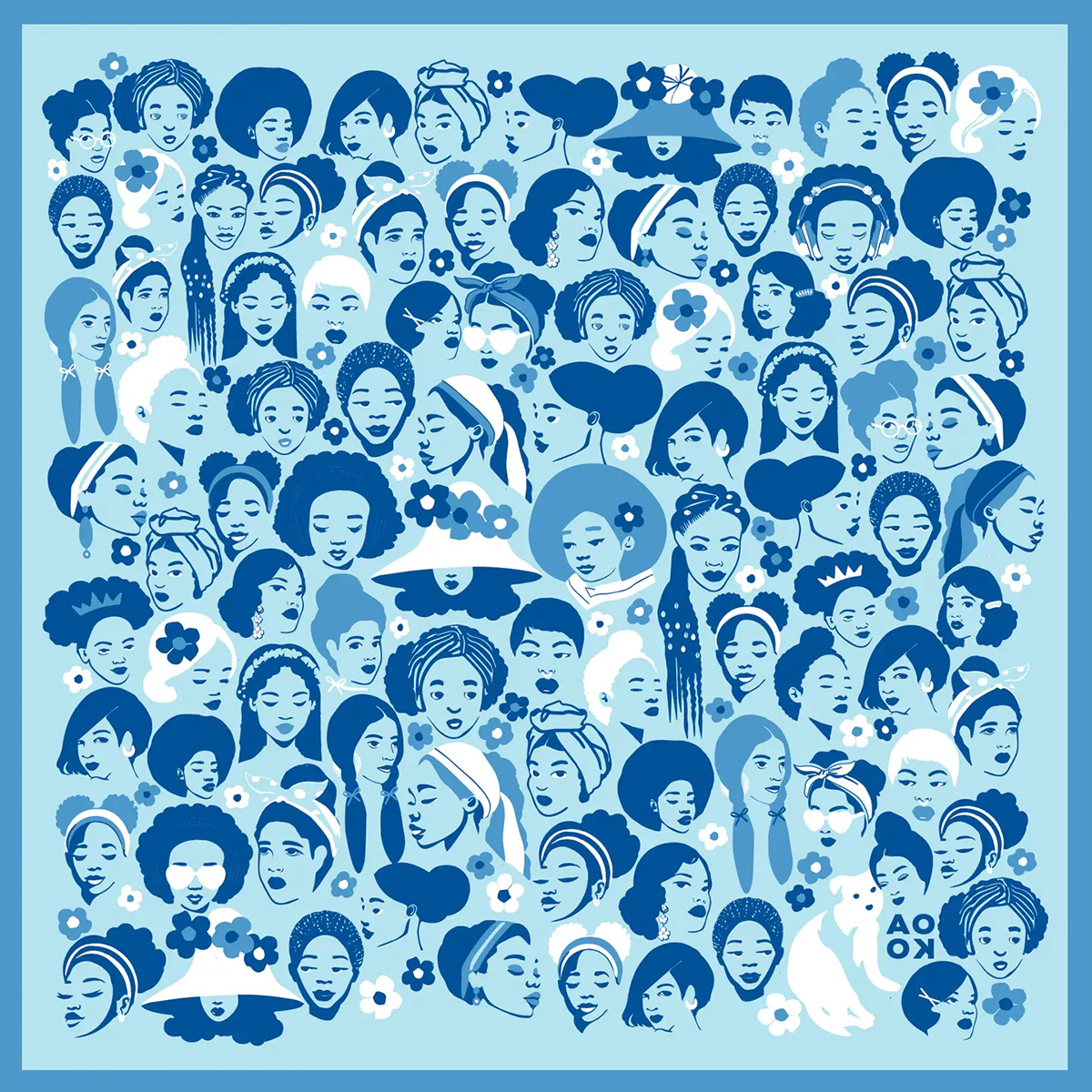
To unlock culinary creativity: The Curious Chef Gift Collection from Each Peach Market. This customizable collection of kitchen oddities — ranging from tinned fish to chili oil — is a quirky gift for the most inventive chefs. The collection is available in a Standard Santa, Extra Goodies and Super Holiday Size for up to $165. The Washington-based market, founded in 2013, permits customers to make the collection special by specifying what unique ingredients are packaged, including products made by local or LGBTQ brands. Each Peach Market offers assembly and pick up in-person at its Mount Pleasant shop and also offers local delivery and nationwide shipping via its website. ($85)
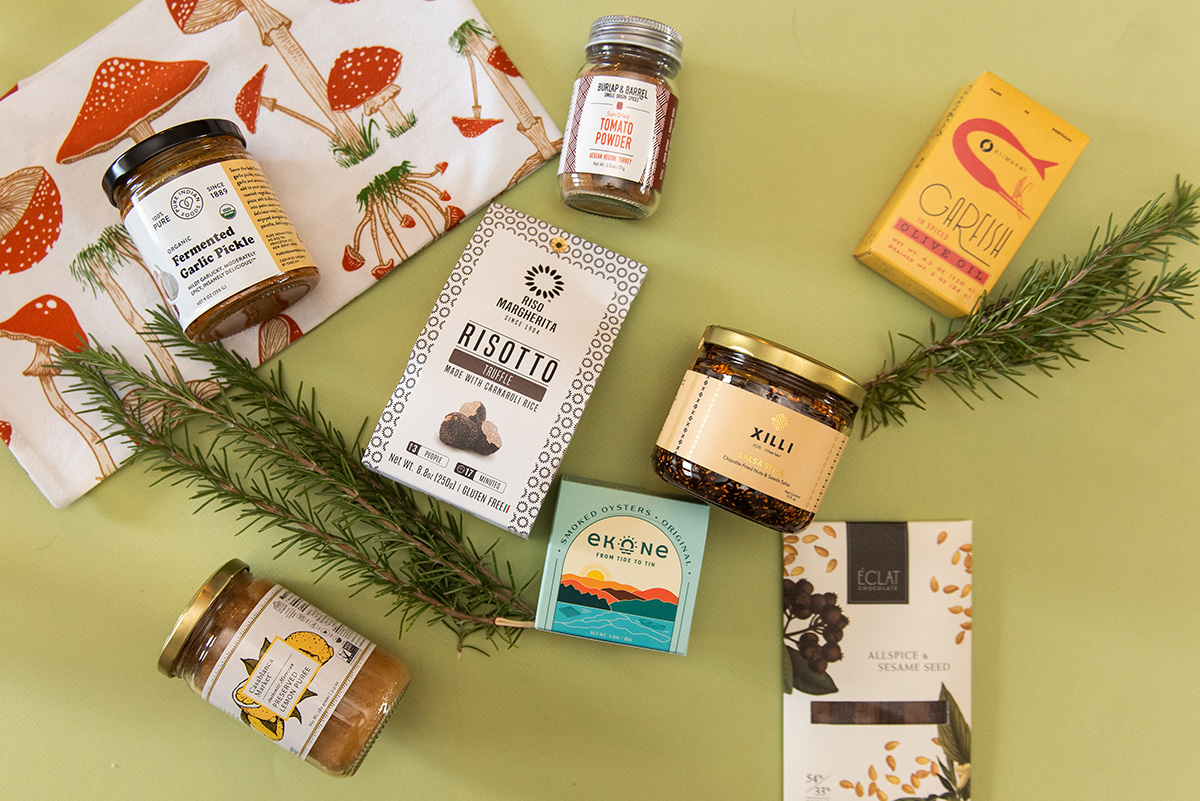
To give a touch of sweetness: The DC Landmark Chocolate Covered Oreo Holiday Cookies from Capital Candy Jar. Wrapped in a festive red bow, this box of nine cookies embraces love for Washington and the holiday season in one. Among the dark and milk chocolate covered cookies are images of the U.S. Capitol, the White House, the Lincoln Memorial, the Jefferson Memorial and festive hollies. The treat, packaged in a Hill East facility just a few blocks from the Capitol, is available for purchase online and at the DowntownDC Holiday Market. ($23.95)
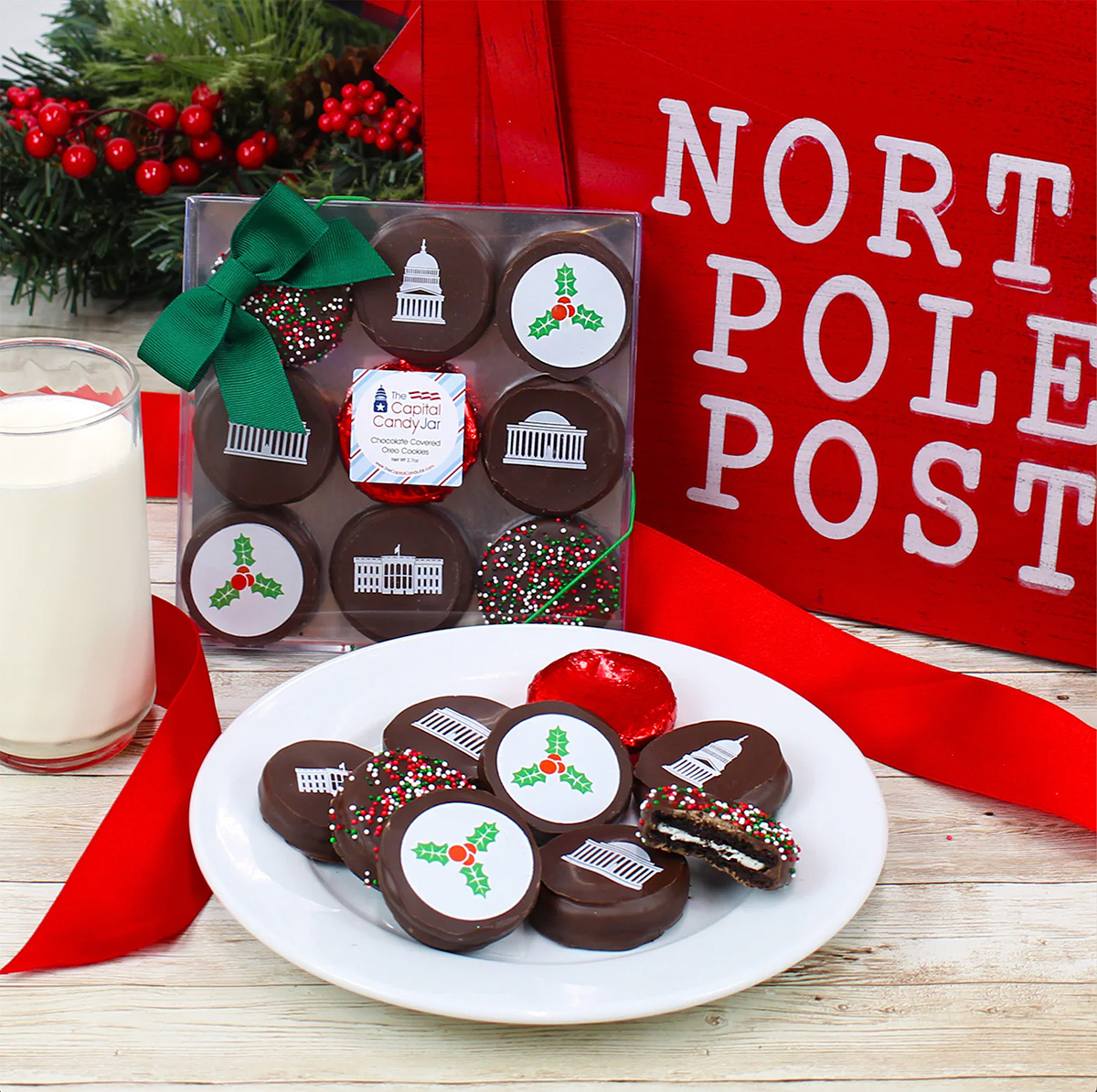
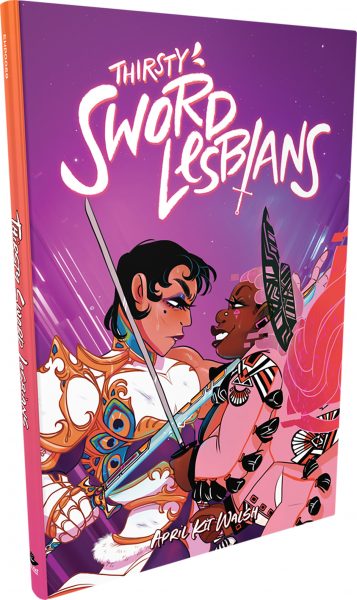
To celebrate queer gaming: Thirsty Sword Lesbians from Labyrinth Games & Puzzles. This roleplaying game embraces lesbian culture by unlocking a world of swords, romance, and battle. Ideal for group settings, the book presents a system of world building and character identities that are best brought to life by creative minds. Labyrinth, which has been a local Washington business for more than 15 years, celebrates non-digital fun through games and puzzles that connect the community. This gift is offered online and at Labyrinth’s Capitol Hill location. ($29.99)
To make a bold statement: The “Resist” T-shirt from Propper Topper. This locally screen-printed black tee features the Washington flag designed within a raised fist, symbolizing both Washington pride, and political resistance. The shirt is made exclusively by Propper Topper, a local Washington business that evolved from a hat shop to a gift store since opening in 1990. The tri-blend unisex shirt is available both for pickup at Propper Topper’s Cathedral Heights location and shipping via the online site. ($32)
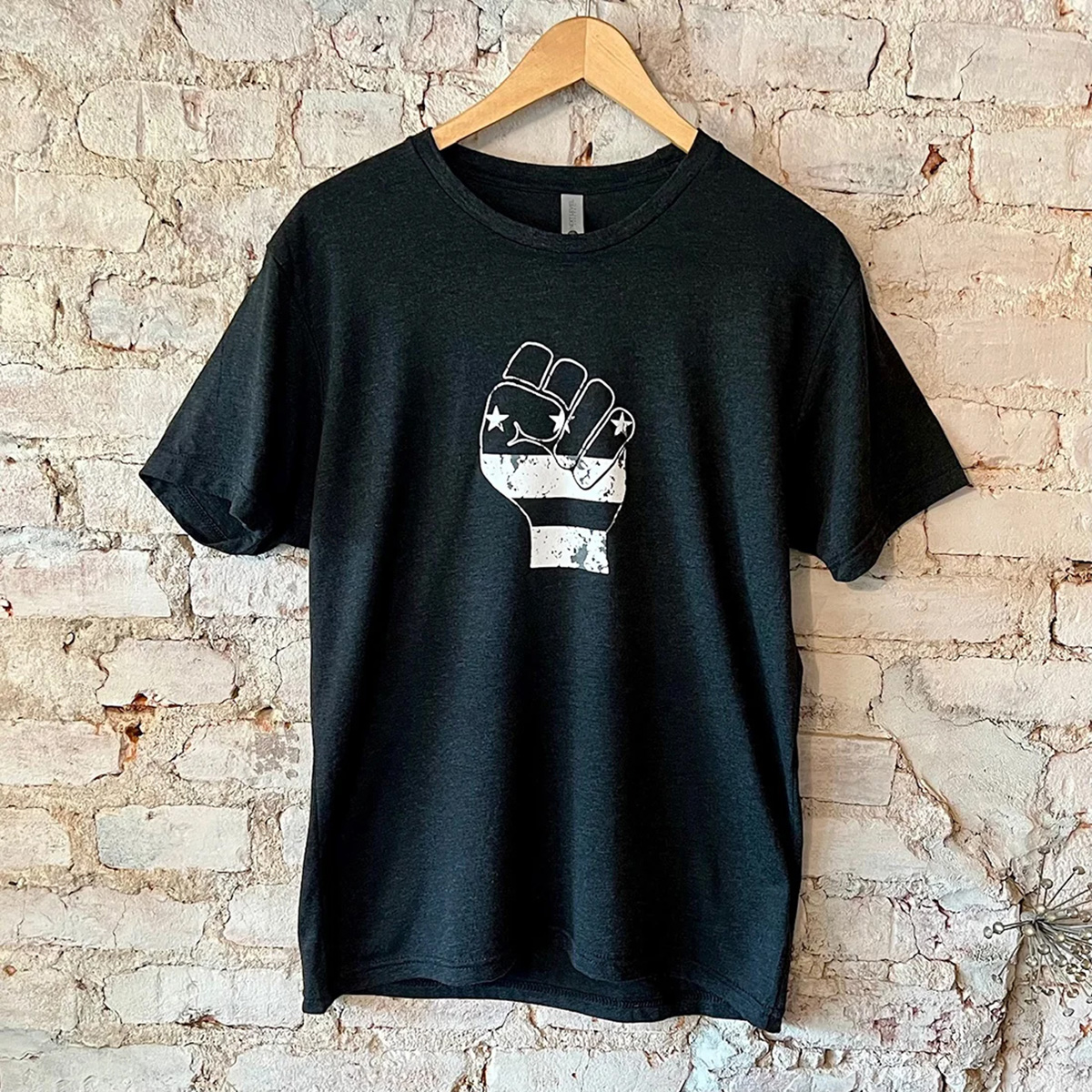
To keep it c(g)lassy: The Glass Ball earrings from Blue Moon Aquarius. Gifting can rarely go wrong when it comes to a new pair of earrings. The unique statement earrings — made of polymer clay, glass, and 18k gold plating over surgical steel — are hand cut, sanded and assembled in Washington, meaning each set is unique. Blue Moon Aquarius, a local brand, is known for its small batch jewelry and home decor designed with clay materials. Available in oxblood, hunter green, lavender, and bluestone color palettes, these earrings are available for purchase on Blue Moon Aquarius’ website and at the DowntownDC Holiday Market. ($48)
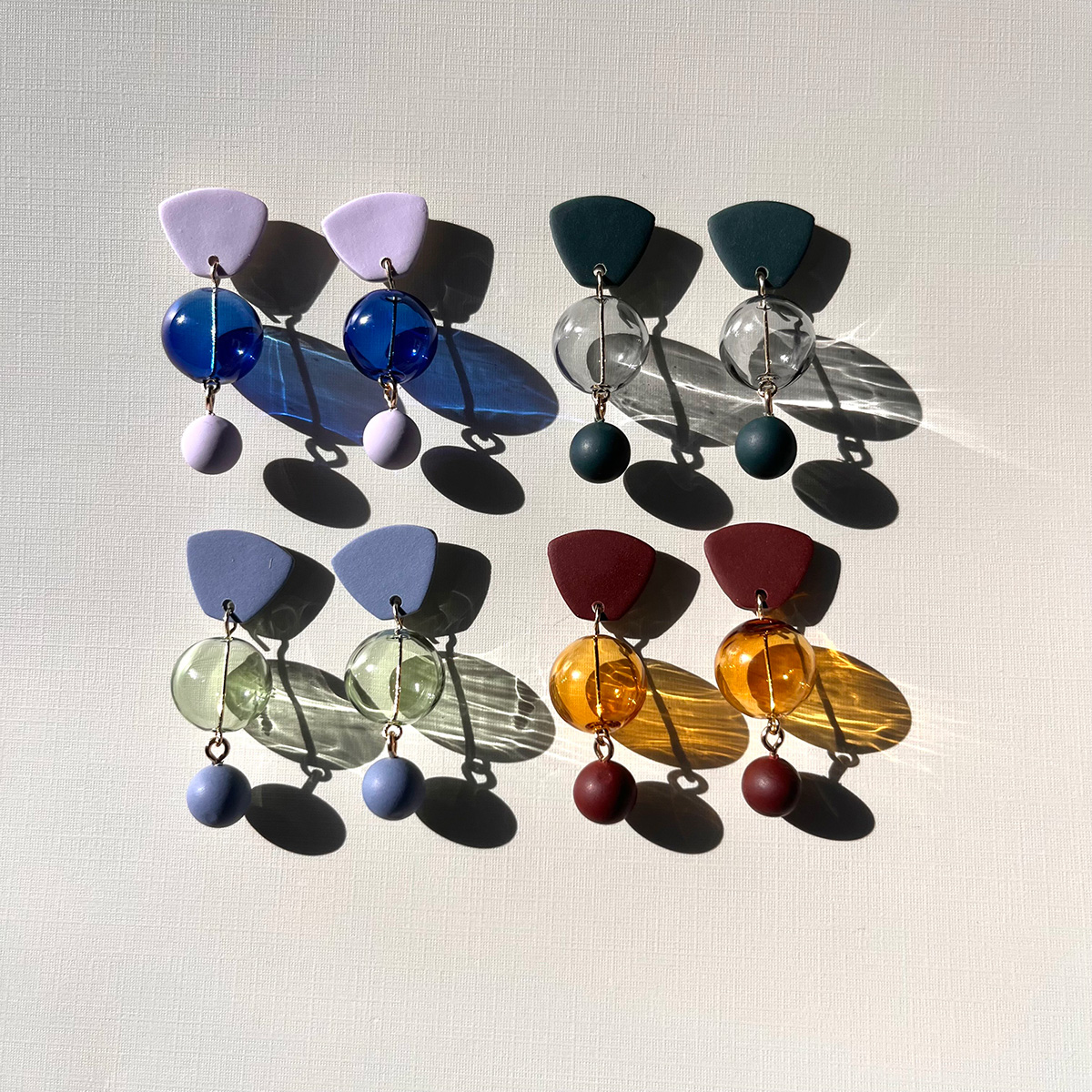
To elevate a holiday tea or charcuterie party: The Honey Flight: Tea Lover’s Selection from BannerBee. This local honey company presents the ideal gift to make cozying up with a cup of tea slightly more special. The Honey Flight contains three types of raw wildflower honey infused with fair trade Ugandan vanilla bean, chai spices, and locally sourced lemon thyme herb. The gift is also an opportunity to uplift a family company based in the Mid-Atlantic that offers all-natural, sustainable products. The flight is available online, at the DowntownDC Holiday Market or at the Arlington Courthouse and Dupont Farmers’ Markets. ($36)
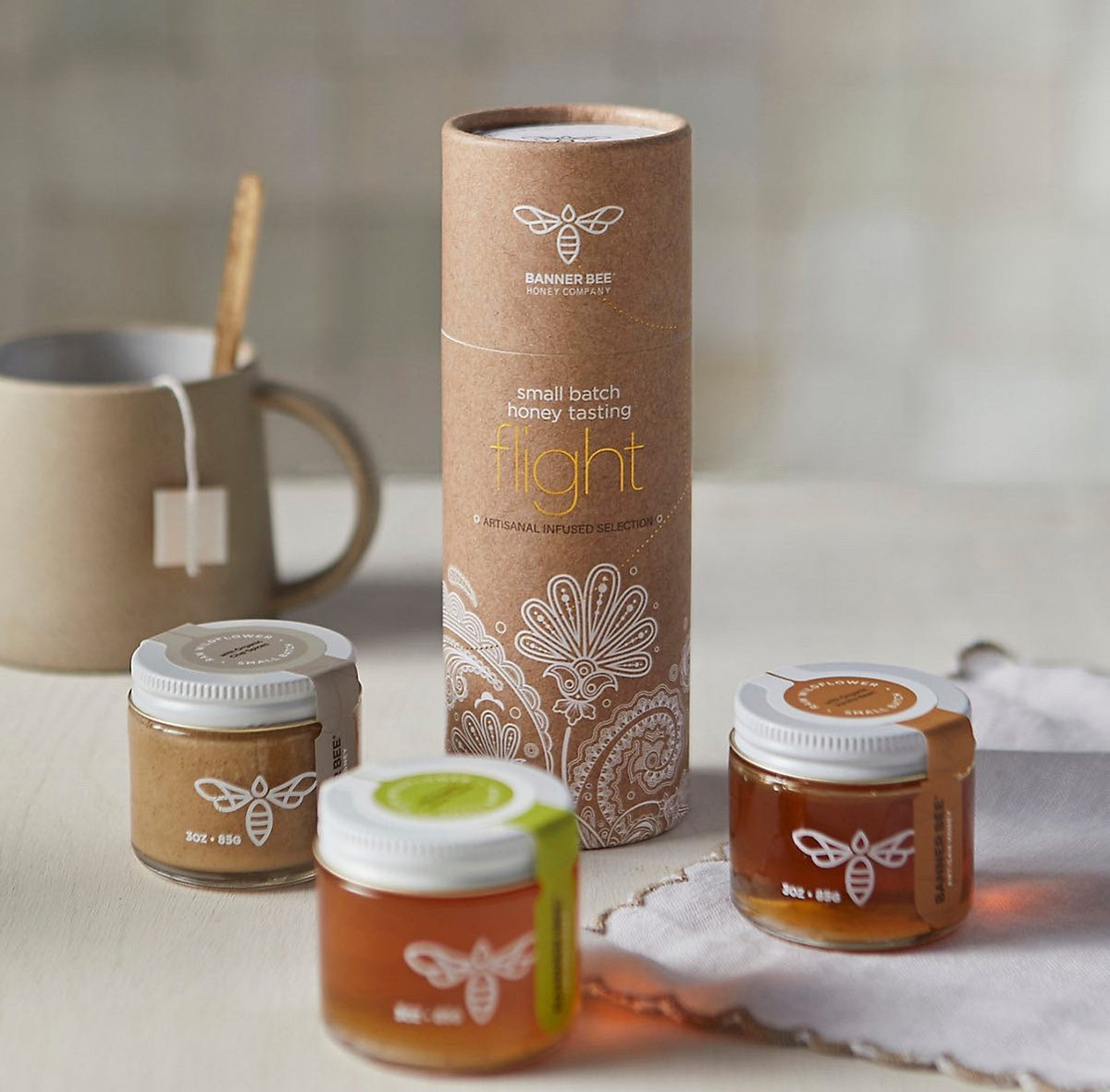
For Baltimore shoppers: If you’re in Charm City, don’t miss Balston Mercantile, opened by a gay couple in June. Their gorgeous shop in the Hampden neighborhood offers an array of unique, upscale finds, from barware and artwork to cookbooks and home decor and more. (849 W. 36th St.)
a&e features
Have yourself a merry John Waters Christmas
Annual holiday show returns to Alexandria and Baltimore
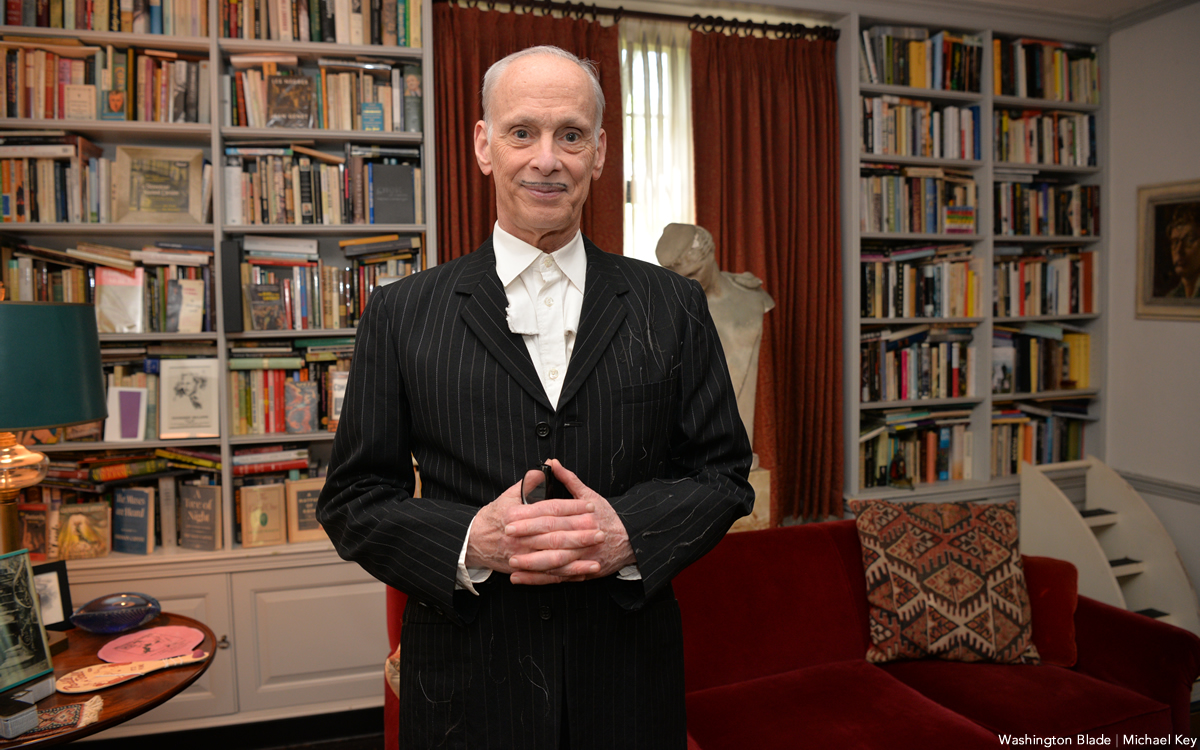
When it comes to iconic Christmas scenes in movies, none can top the tree-toppling tantrum thrown by cha-cha heels-deprived Dawn Davenport in John Waters’s fifth full-length feature “Female Trouble” from 1974. Therefore, it’s not surprising that Waters continues to make art out of Christmas, performing his spoken word Christmas tour in cities across the country. Waters has even more reason to celebrate with the release of his new red vinyl 7” single, a cover of Little Cindy’s “Happy Birthday Jesus (A Child’s Prayer)” on the A-side, and “A Pig Latin Visit From St. Nicholas” on the B-side. If you’re still looking for unique Christmas gifts, consider this record. As always, John was kind enough to make time for an interview in advance of his tour dates.
BLADE: John, in preparation for this interview with you, I went back and listened to Little Cindy’s original rendition of “Happy Birthday Jesus (A Child’s Prayer)” on your “A John Waters Christmas” CD.
JOHN WATERS: One thing I did, if you notice, I make the same stumble in my recording that she did in the original.
BLADE: It sounded to me like she got choked up.
WATERS: No, I think she just stumbles over a word, so I stumbled over the same word. It’s appropriation, insanely.
BLADE: Is this a song you first became aware of in your youth or when you were an adult?
WATERS: When I was doing the Christmas album, I had this friend named Larry Benicewicz. He was kind of my idea man with music. He knew every single old record. I would say to him, “Weird Christmas songs,” when we were doing a soundtrack, or a song about bears, or a song about this, and he would give me all these tapes. It was one of the ones he played for me. A lot of the songs I put in my movies and on my records, I did know as a kid. I did not know this one, but I immediately embraced it. I don’t think it’s campy. I think it really is spiritual in a weird way. My doing it makes it a novelty record. I am really for novelty records, and there aren’t any anymore. Why was there not a COVID novelty record? That’s insane. The dance “The Bug” that’s on the “Hairspray” soundtrack would be perfect for COVID.
BLADE: The thing that struck me was that for a Christmas song in the voice of a child, a kind of death pall hangs over it, with lines like, “If I was good you’d let me live with you” and “they nailed you to the cross, they wanted you to die.”
WATERS: All of it! When I see children at midnight mass kneeling in front of a nude man nailed to a cross, I feel like I’m at The Eagle! It is S&M, it’s creepy. I took the same cover (photo) from her record to parody and put my face on it. The same thing I did with The Singing Dogs last year when I covered (their version of) “Jingle Bells.” I’m really into novelty records. I love them and I’m trying to bring them back. I don’t expect anybody to ever play these records. Even The Singing Dogs one said on it, “Please do not play this record” [laughs]. And the flipside, the Pig Latin version, is almost impossible to listen to.
BLADE: I’m so glad you mentioned that. “A Pig Latin Visit From St. Nicholas” reminded me of the lost art of speaking in Pig Latin. I also recall watching the PBS series “Zoom” as an adolescent and learning to speak “ubbi dubbi,” a distant relative of Pig Latin. Do you think that the time is right for a Pig Latin or ubbi dubbi revival?
WATERS: Here’s the thing, I never could pick up any language, except Pig Latin. I’ve been in every foreign country. Foreign countries have given me money to learn to speak the language. I can never do it! But Pig Latin…my parents and other parents in the ‘50s spoke Pig Latin so kids couldn’t understand what they were saying. Then my mother taught it to me, and I used it. The hardest take to shoot in “Pink Flamingos” was not eating the dog shit. It was when the cast skipped, in one take, saying “E-way, are-yay e-they ilthiest-fay eople-pay in-hay e-they ole-hay ide-way orld-way.” We’re the filthiest people in the whole wide world in Pig Latin. We had to do so many takes so they could do it once without screwing it up. In “Polyester,” Edith (Massey) answers the phone, “ello-hay.” I did a photo piece where it was all subtitled in Pig Latin. Like “osebud-Ray” (from “Citizen Kane”) or in “Streetcar,” “ella-Stay!” [Laughs] All the iconic dialogue translated into Pig Latin. My assistant who helped me do it, had never heard of Pig Latin. She really got good at it because she lived in many foreign countries and can pick up languages. But it’s not that easy to do it correctly and read it. Your computer will translate into Pig Latin.
BLADE: AI understands Pig Latin?
WATERS: I guess that’s AI. It wasn’t 100% right, but it was close. I can speak it if I look at it, but just do a bit at a time. It was a challenge that no one would possibly care about or want to do.
BLADE: I think you pulled it off very well.
WATERS: If you want people to leave on Christmas morning, you put it on. That’s how you get your guests to leave. It’s time to go.
BLADE: Ood-gay i-bay! How did your relationship with record label Sub Pop, which released 2021, 2022, 2024, and new 2025 holiday singles, come about?
WATERS: I believe the first thing I did for them was “Prayer to Pasolini.” They came to me through Ian Brennan. He’s won a couple Grammys for World Music, but he is also is one of my agents who does the Christmas tour and a lot of my shows, anything with music. He helped me arrange each one of the songs. He had a relationship with Sub Pop. It was perfect. My friends in Baltimore, (the band) Beach House, have had huge success.
BLADE: That’s right, they’re on Sub Pop!
WATERS: Yes! I’m happy to be on it. I’ve even been to the warehouse and posed for pictures like Jackie Suzanne used to do.
BLADE: Is there any chance that “A John Waters Christmas” might be reissued on vinyl by Sub Pop?
WATERS: No. It’s such a nightmare to get the rights and to renew them. You have to find the publisher and the writer, and they usually hate each other. It doesn’t matter if it’s obscure or famous, it’s hard to get. You have to make the deal. The singer doesn’t get anything unless they play it on the radio. It would be so complicated legally, and there would be such a [laughs] tiny audience for it. I hope it will come out again. The same thing with the one for Valentine’s Day. I had two of them that did quite well when they came out; “A Date With John Waters and “A John Waters Christmas.” The “John Waters Christmas” album is still the soundtrack that plays whenever I’m doing my spoken word Christmas show as people are entering the theater.
BLADE: Aside from your annual Christmas show tour, what else do you do for the holidays now, and are there any traditions that you’ve carried over from your family?
WATERS: Certainly! I have two sisters, my brother’s widow, and me, so there are four and we take turns each year to have the Christmas dinner. Mine was last year. An entire sit-down dinner. Mom’s China, the silverware, the entire full dinner. It’s pretty traditional. I don’t have a Christmas tree, but I do decorate the electric chair from “Female Trouble.” That is a tradition in my family. We do have Christmas decorations, but they’re usually weird ones that fans sent me. I have one with Divine knocking over the Christmas tree, and the Christmas tree lights up, all sorts of amazing things. There is definitely a tradition here that might be a little altered, but it is definitely a tradition. I used to have a giant party every year, but COVID ended that. I still wouldn’t want 200 people in my house breathing right now.
BLADE: I was looking at your tour schedule and wondered if there are any new cities in which you’ve never performed the John Waters Christmas show that have been added to this year’s schedule?
WATERS: I don’t think there’s a city in America in which I haven’t done one show! The only places I haven’t been to are Hawaii and Alaska. I could do it there, but it’s too long on a tour. I can’t think of a city I haven’t played in in America over the last 50 years. The Christmas show is completely different every year. It doesn’t matter if you saw it last year.
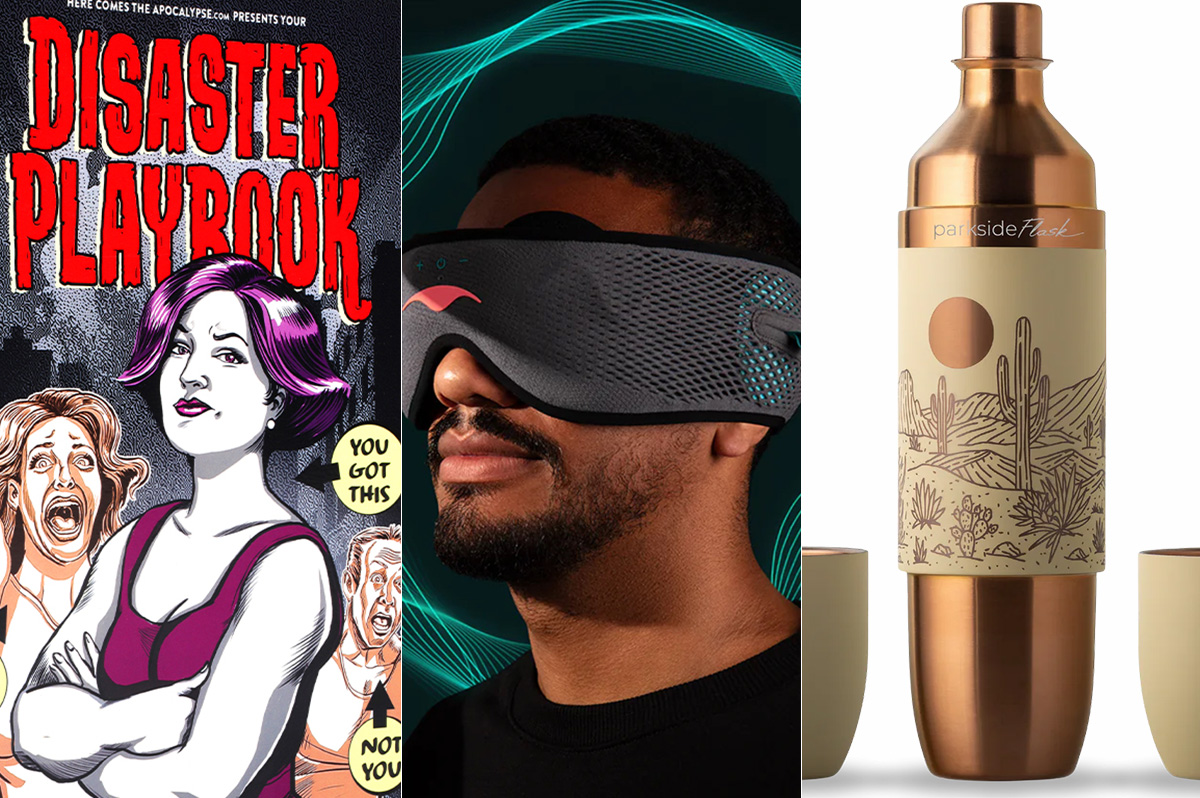
Some gifts scream practical, others whisper luxury, and a few flat-out blur the lines. From cocoa that feels ceremonial to a cologne that linger like a suggestive smirk, this year’s ultimate gift picks prove that thoughtful (and occasionally naughty) presents don’t have to be prosaic. Welcome to your holiday cheat sheet for festive tangibles that get noticed, remembered, and maybe even result in a peck of gratitude planted under the mistletoe. Consensually, of course.
Amber Glass Champagne Flutes
Pop the champs – but make it vintage. These tulip-shaped stunners in amber-tinted glass bring all the Gatsby vibes without the Jazz-age drama. Whether you’re toasting a milestone or celebrating a Tuesday, their seven-ounce capacities and hand-wash-only care make ‘em as practical as they are pretty. Pair with a thoughtful bottle of bubs and gift with a glittering wink. $18, NantucketLooms.com
Disaster Playbook by Here Comes the Apocalypse
Because the end of the world shouldn’t be a solo act, this spiral-bound guide is your step-by-step roadmap to surviving and thriving when everything else goes sideways, which might be sooner than you think. Packed with checklists, drills, and a healthy dose of humor, it’s like a survival manual written by your most prepared (and slightly snarky) friend. Whether you’re prepping for a zombie apocalypse or, more realistically, REVOLUTION!, this playbook’s got your back. $40, HereComesTheApocalypse.com
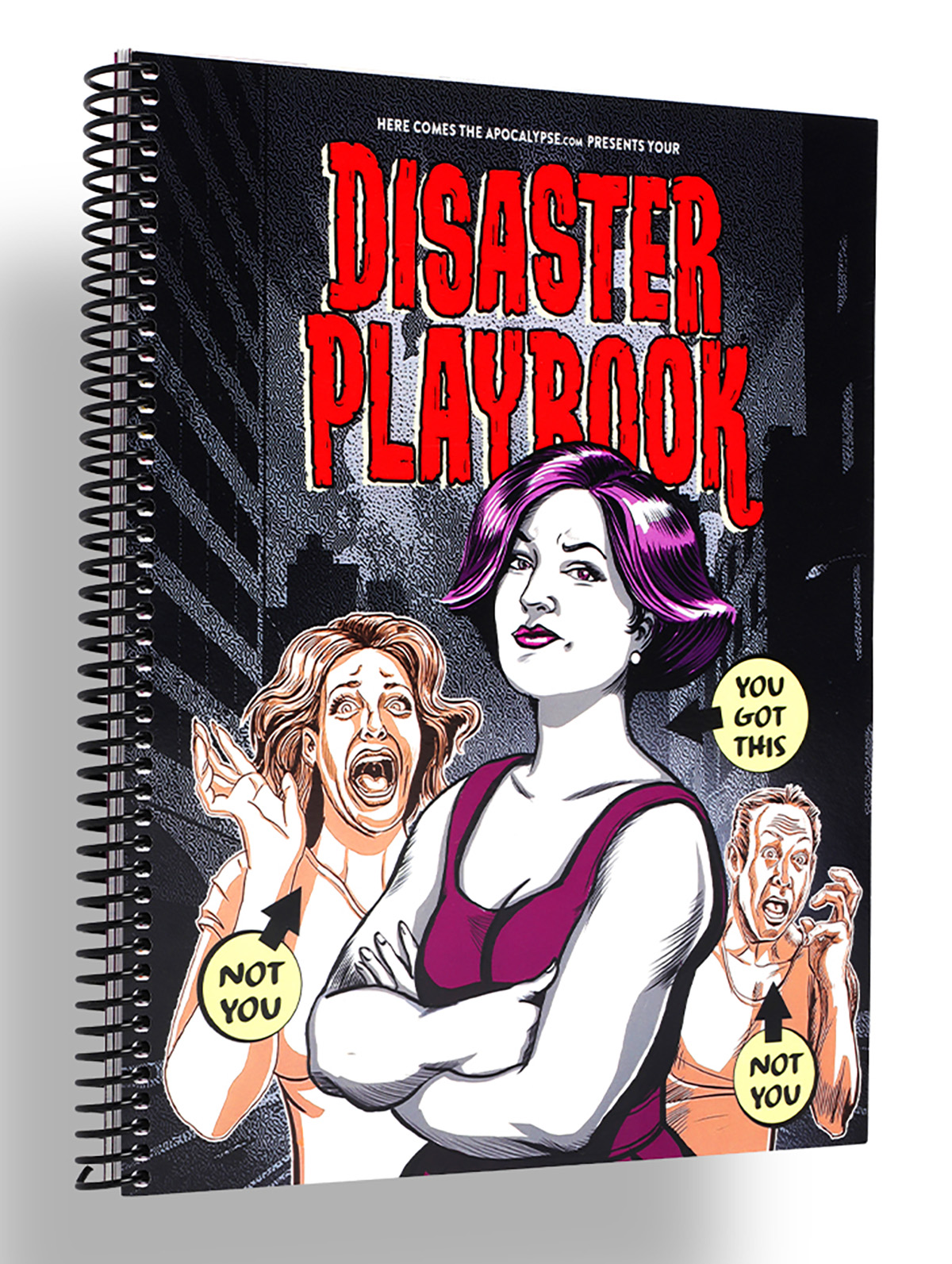
Wickless Vulva Candles
Bold, luxurious, and completely flame-free, CTOAN’s wickless candles melt from beneath on a warmer, releasing subtle, sophisticated fragrances, like sandalwood or lavender. The vulva-shaped wax adds a playful, provocative element to any space –perfect for a bedroom, living room, or anywhere you want elegance with an edge. A gift that celebrates form, intimacy and self-expression, no fire required. $39, CTOANCO.com
Villeroy & Boch Royal Classic Christmas Collection
Every meal is a mini celebration – with whimsy at every place setting – in Villeroy & Boch’s Royal Classic festive dinnerware collection that hits all the right notes. Made from premium German porcelain, it features nostalgic little toys, nutcrackers, and rocking horses in delicate relief, giving your holiday spread a playful but refined twist. Dishwasher- and microwave-safe, it’s luxe without the fuss. Gift a piece to a special someone, or start a collection they’ll use (and show off) for years to come. $22-$363, Villeroy-Boch.com
Greenworks Electric Lawnmower
You a ’hood queen who considers lawn care performance art – or just wants to rule the cul-de-sac in quiet, emission-free glory? Greenworks’ zero-turn electric mower has the muscle of a 24-horsepower gas engine but none of the fumes, drama or maintenance. Six 60V batteries and a 42-inch deck mean you can mow up to two-and-a-half acres on a single charge – then plug in, recharge, and ride again. It’s whisper-quiet, slope-ready, and smooth enough to make you wonder why you ever pushed anything besides your queer agenda. The perfect gift for the homeowner who loves sustainability, symmetry, and showing off their freshly striped yard like that fresh fade you get on Fridays. $5,000, GreenworksTools.com
Molekule Air Purifier
For the friend who treats their space like a sanctuary (or just can’t stand sneezes), the Molekule Air Pro is magic in motion. Covering up to 1,000 square feet, it doesn’t just capture allergens, VOCs, and smoke – it destroys them, leaving your air feeling luxury-clean. FDA-cleared as a Class II medical device, it’s serious science disguised as modern design. Gift it to your city-dwelling, pet-loving, candle-burning friend who likes their living room as pristine as their Instagram feed. $1,015, Molekule.com
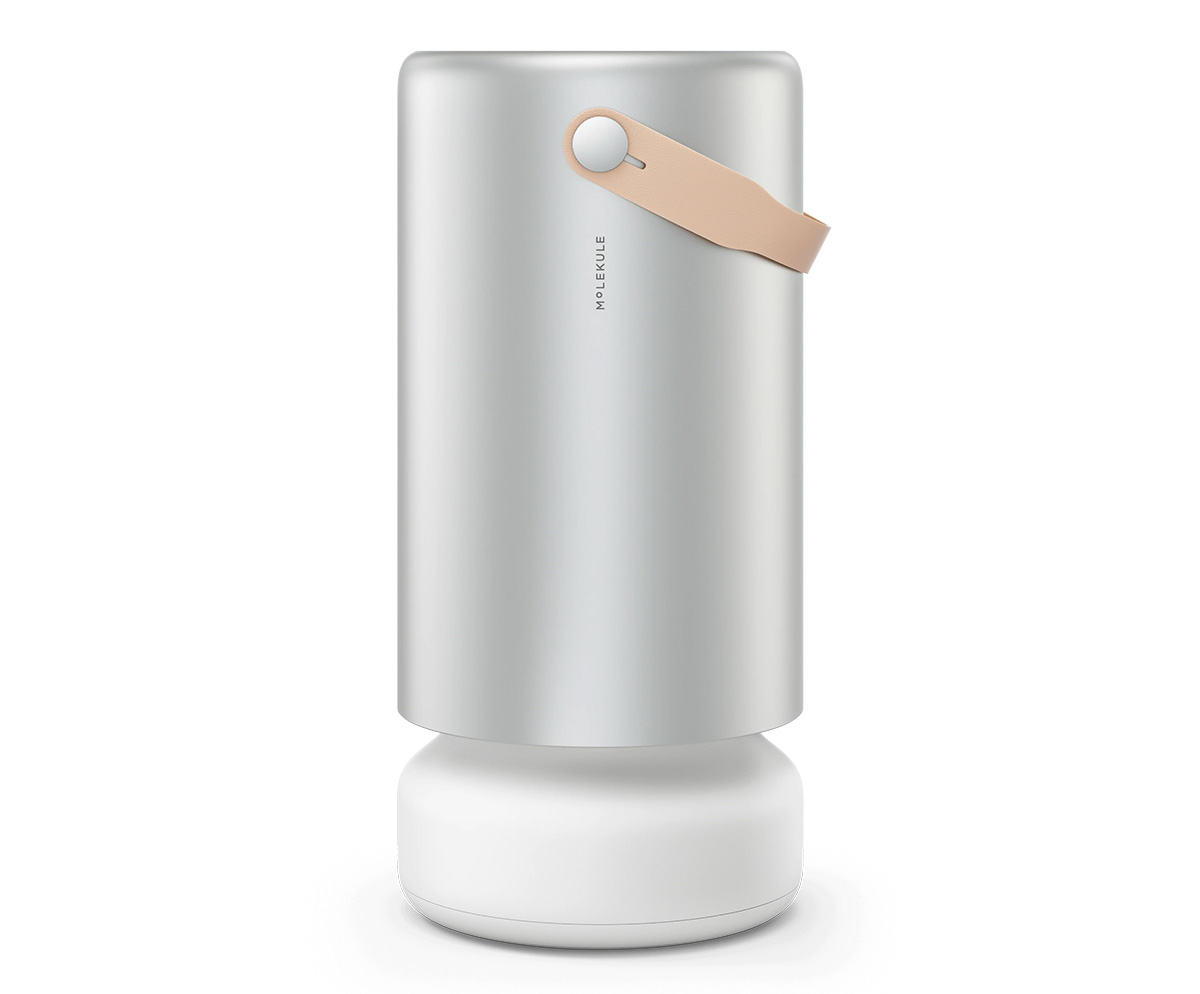
Cipriani Prosecco Gift Set
Effervescent with stone-fruit sweetness and a touch of Italian flair, the Cipriani Bellini & Prosecco gift set brings brunch-level glamour to any day of the week. The Bellini blends rich white-peach purée with sparkling wine, while the dry ’secco keeps things crisp and celebratory. Pop a bottle, pour a flute, and suddenly winter weeknights feel like a party – even with your pants off. $36, TotalWine.com
Woo(e)d Cologne
British GQ recently crowned Woo(e)d by ALTAIA the “Best Date Night Fragrance,” and honestly, they nailed it. Confident without being cocky – smoky gaïac and Atlas cedarwood grounds the room while supple leather and spicy cardamom do all the flirting – it’s a scent that lingers like good conversation and soft candlelight. Gift it to the one who always turns heads – or keep it for yourself and let them come to (and then on) you. $255, BeautyHabit.com
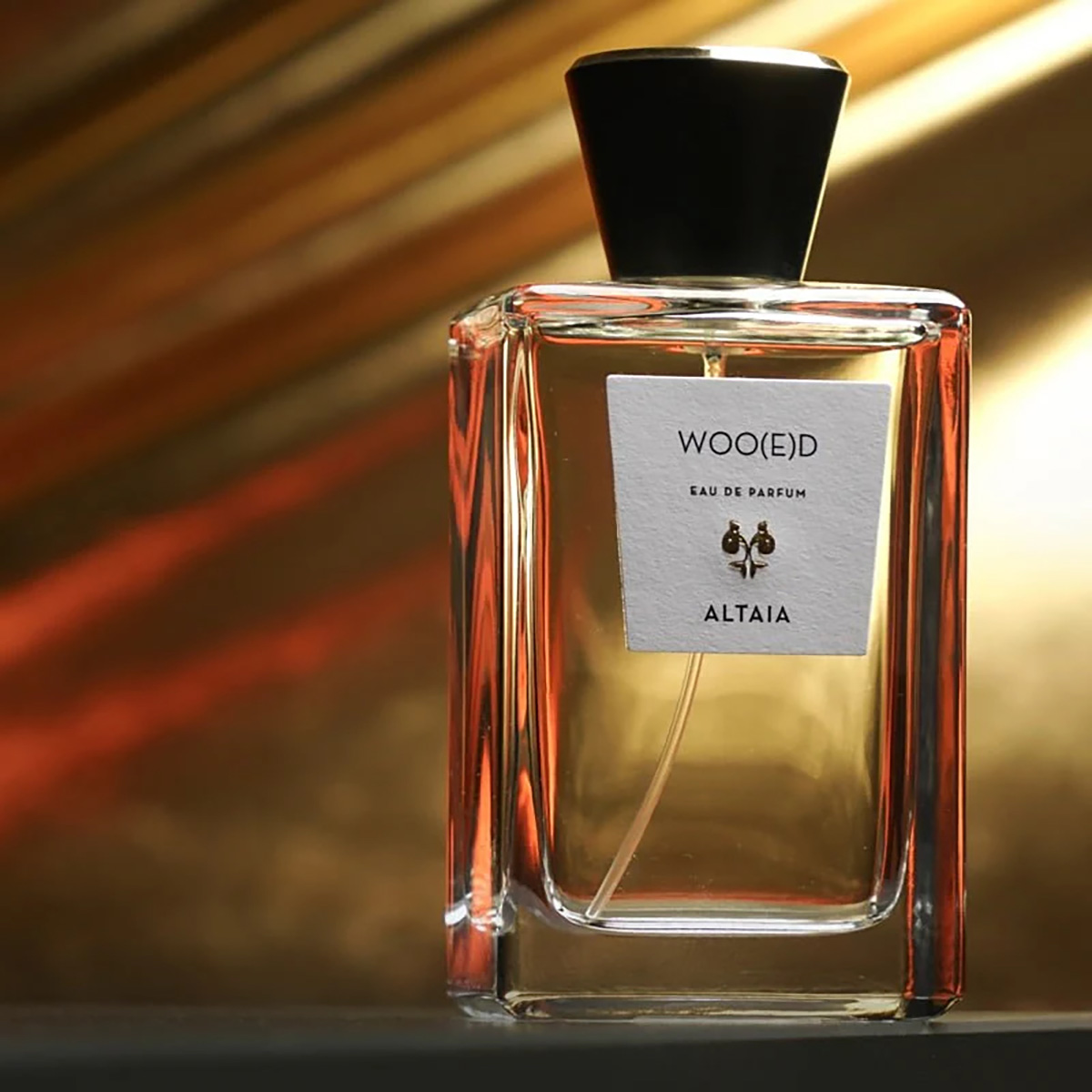
Lococo Cocoa Kit
Keep the run-of-the-mill mugs in the cabinet this Christmas and pull out Lococo’s handcrafted Oaxacan versions that demand you slow down and sip like it matters. Paired with a wooden scoop, rechargeable frother, and Lococo’s signature spice hot-chocolate blend (vegan, gluten-free, with adaptogenic mushrooms), this holiday kit turns Mexi-cocoa into a mini ritual you’ll look forward to. Perfect for anyone who loves a little indulgence with a side of ¡A huevo! energy.
Manta Sleep Mask
Total blackout, zero pressure on the eyes, and Bluetooth speakers built right into the straps, this ain’t your mama’s sleep mask — but it could be. The Manta SOUND sleep mask features C-shaped eye cups that block every hint of light while ultra-thin speakers deliver your favorite white noise, meditation, or late-night playlist straight to your ears. With 24-hour battery life, breathable fabric, and easy-to-adjust sound, it turns any bed (or airplane seat) into a five-star sleep suite. Perfect for anyone who treats shut-eye like an art form (or just wants to escape their roommate’s late-night bingin’ and/or bangin’). $159, MantaSleep.com

Shacklelock Necklace
Turn the industrial-chic vibe of a shackle into a sleek statement. Mi Tesoro’s platinum-plated stainless-steel necklace sits on an 18-inch wheat chain, featuring a shackle-style latch pendant that’s waterproof, tarnish-free, and totally fuss-les. Beyond style, it nods to a classic gesture in the queer leather community: replacing a traditional Master lock with something elegant to quietly signal belonging to someone special. Wear it solo for a minimalist edge or layer it like you mean it; either way this piece locks in both your look and your intentions. $90, MiTesoroJewelry.com
Parkside Flask Mojave Edition
Wine nights get a desert glow-up with Parkside’s limited-edition 750-milliliter all-in-one flask draped in sun-washed bronze and badland hues like sage, sand, and terracotta – with magnetic stemless tumblers that snap on for effortless shareability. It keeps your vino chilled for 24 hours, pours without drips (no tears for spilled rosé, please), and even lets you laser-engrave your own mantra or inside joke. Perfect for picnics, surprise rooftop clinks, or gifting to your favorite wine (or desert) rat. $149, HighCampFlasks.com
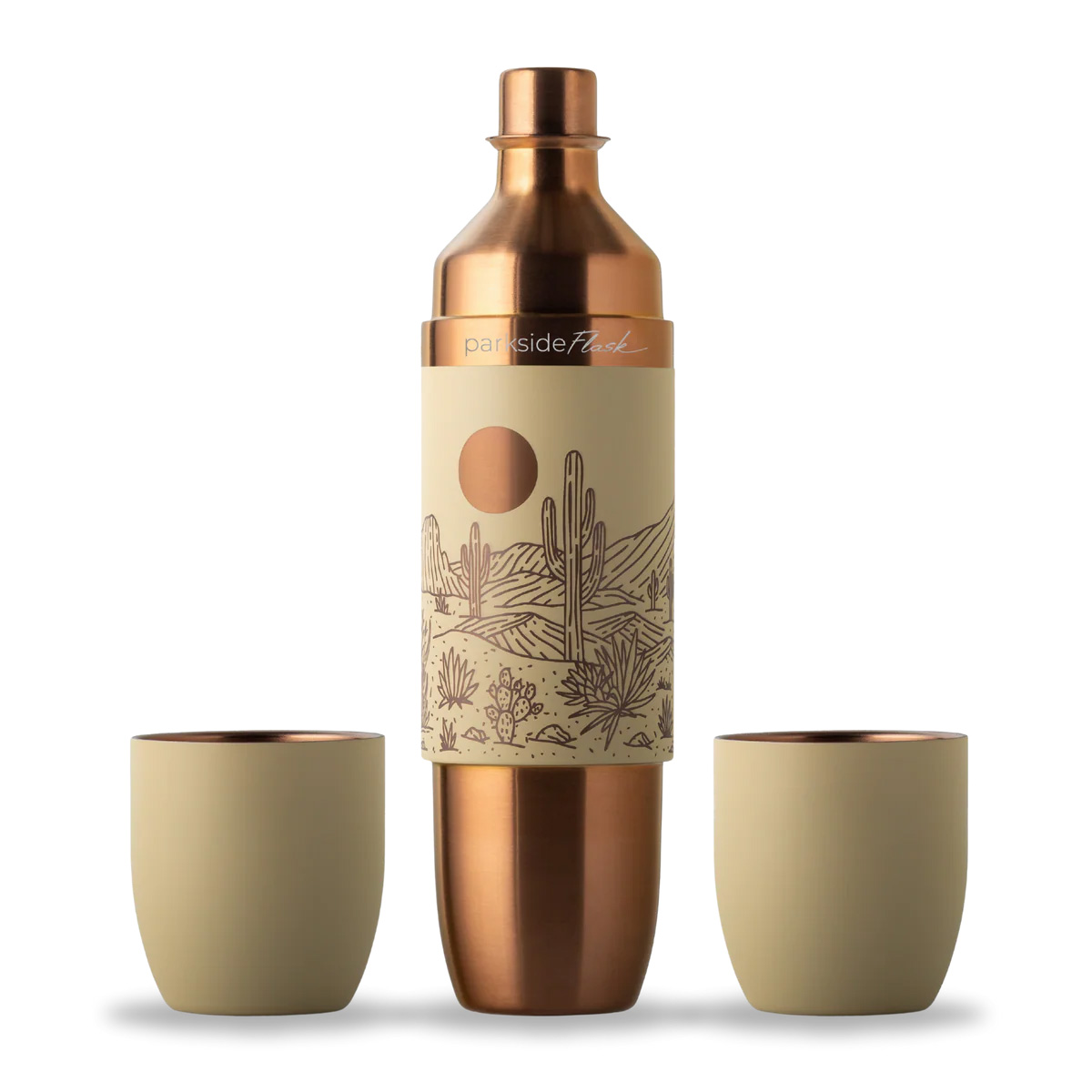
Mikey Rox is an award-winning journalist and LGBT lifestyle expert whose work has published in more than 100 outlets across the world. Connect with him on Instagram @mikeyroxtravels.
-

 District of Columbia1 day ago
District of Columbia1 day agoReasons to be optimistic about 2026
-

 Commentary3 days ago
Commentary3 days agoAmerica is going in the wrong direction for intersex children
-

 District of Columbia3 days ago
District of Columbia3 days agoRush reopens after renewing suspended liquor license
-

 Real Estate4 days ago
Real Estate4 days agoChild- and pet-proofing your home for the holidays



